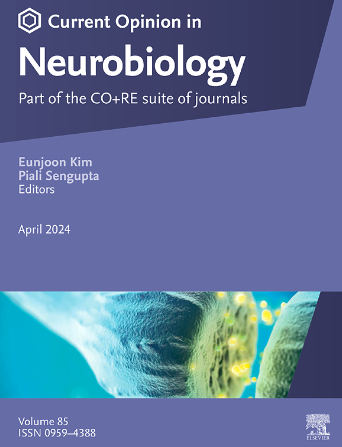Cellular interplay in brain organoids: Connecting cell-autonomous and non-cell-autonomous mechanisms in neurodevelopmental disease
IF 5.2
2区 医学
Q1 NEUROSCIENCES
引用次数: 0
Abstract
The field of brain organoids has experienced a period of rapid and transformative growth, enabling researchers to investigate complex human biological mechanisms that were previously deemed intractable. This review provides an overview of the current landscape of brain organoids, with a particular focus on their relevance in the context of neurodevelopmental disorders. It also emphasizes the crucial role these models play in elucidating both cell-autonomous and non-cell-autonomous mechanisms. We describe how these two mechanisms, often considered to be independent, are intricately interconnected. In conclusion, this review aims to highlight how the utilization of brain organoids has considerably advanced our comprehension of neurodevelopmental disorders, while also delineating prospective avenues for investigating these complex conditions.
脑类器官中的细胞相互作用:神经发育疾病中连接细胞自主和非细胞自主机制
脑类器官领域经历了一个快速和变革性的增长时期,使研究人员能够研究复杂的人类生物机制,这些机制以前被认为是难以解决的。这篇综述概述了目前脑类器官的概况,特别关注它们在神经发育障碍中的相关性。它还强调了这些模型在阐明细胞自主和非细胞自主机制方面发挥的关键作用。我们描述了这两种通常被认为是独立的机制是如何错综复杂地相互联系的。总之,这篇综述的目的是强调脑类器官的利用如何大大提高了我们对神经发育障碍的理解,同时也描绘了研究这些复杂疾病的未来途径。
本文章由计算机程序翻译,如有差异,请以英文原文为准。
求助全文
约1分钟内获得全文
求助全文
来源期刊

Current Opinion in Neurobiology
医学-神经科学
CiteScore
11.10
自引率
1.80%
发文量
130
审稿时长
4-8 weeks
期刊介绍:
Current Opinion in Neurobiology publishes short annotated reviews by leading experts on recent developments in the field of neurobiology. These experts write short reviews describing recent discoveries in this field (in the past 2-5 years), as well as highlighting select individual papers of particular significance.
The journal is thus an important resource allowing researchers and educators to quickly gain an overview and rich understanding of complex and current issues in the field of Neurobiology. The journal takes a unique and valuable approach in focusing each special issue around a topic of scientific and/or societal interest, and then bringing together leading international experts studying that topic, embracing diverse methodologies and perspectives.
Journal Content: The journal consists of 6 issues per year, covering 8 recurring topics every other year in the following categories:
-Neurobiology of Disease-
Neurobiology of Behavior-
Cellular Neuroscience-
Systems Neuroscience-
Developmental Neuroscience-
Neurobiology of Learning and Plasticity-
Molecular Neuroscience-
Computational Neuroscience
 求助内容:
求助内容: 应助结果提醒方式:
应助结果提醒方式:


